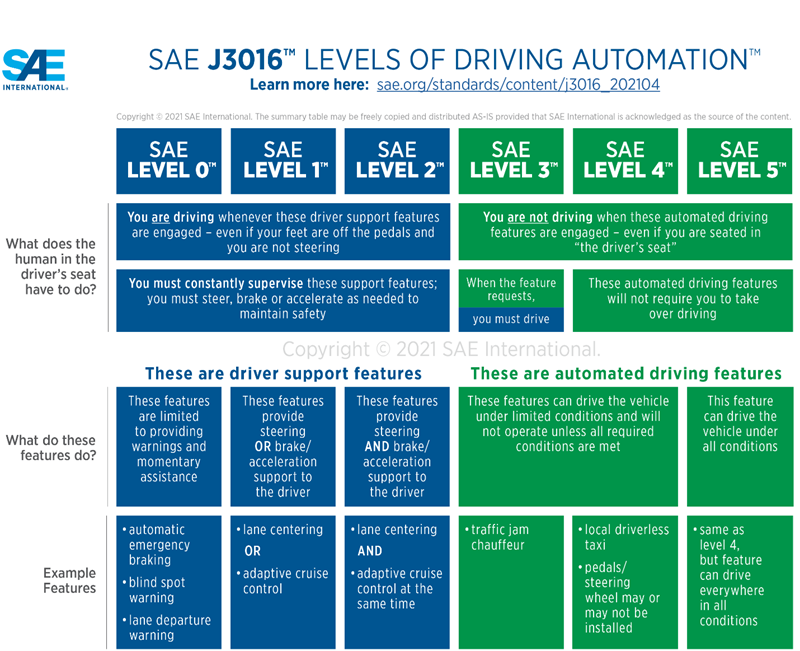Autonomous Vehicles Strategic Framework
Introduction
Autonomous vehicles (AVs) have the potential to transform our transportation system and communities by solving individual mobility needs, improving roadway safety, and moving goods throughout the state sustainably and efficiently. The deployment of autonomous vehicles also could transform manufacturing, maintenance, and service business models to create new jobs and industries for the California workforce.
As the fifth-largest economy in the world, California continues to be at the center of many innovations in business and technology. With a focus on maintaining its role as a technological leader, the state can help encourage the development of AV technology and related industries. These efforts to foster innovation must also be balanced with careful attention to the potential impacts on state goals.
In August 2022, the State of California released the “Autonomous Vehicle Strategic Framework.” This planning document reflects the collaborative work of multiple state agencies and stakeholder input to create a statewide vision for how AVs could be best integrated into our daily lives and the transportation ecosystem.
Vision: The State of California will leverage innovation to safely deploy and maximize the potential public benefits of zero-emission autonomous vehicles for mobility, safety, job quality, equity, health, environment, land use, and quality of life.
Guiding Principles: Environment, Equity, High-Quality Jobs, Inclusivity and Equitable Access, Partnerships, Public Health and Livability, Safety, and Shared Economic Benefit








This strategic framework is intended to align with and build on other state plans, including increasing safety, reducing greenhouse gas emissions in transportation, readying the workforce for high-quality jobs of the future, and enhancing mobility and access for all Californians.
- Future of Work Commission Report
- California Wellness Plan
- ZEV Market Development Strategy
- Climate Action Plan for Transportation Infrastructure
- Master Plan for Aging
As a next step, the State will be working to identify and implement targeted actions in support of the Vision and Guiding Principles. Partnership with other entities, as well as ongoing collaboration and conversation with stakeholders, will also be important to the development of actions.
Documents
- State of California – Autonomous Vehicle Vision and Guiding Principles (PDF)
- In 2018, the California Multi-Agency Workgroup on AV Deployment for Healthy and Sustainable Communities created “Automated Vehicle Principles for Healthy and Sustainable Communities.”
Information about levels of driving automation
As described in the California Vehicle Code, an autonomous vehicle is a vehicle that is capable of operating without the active physical control or monitoring of a human driver. The Society of Automotive Engineers (SAE) International has defined different levels of driving automation, from Level 0 (no automation, where a human driver is required at all times) to Level 5 (where an autonomous vehicle operates independently, without a human driver). California law also defines an autonomous vehicle as one that meets SAE Levels 3-5 technology.
SAE Levels

Source: https://www.sae.org/blog/sae-j3016-update
Contact Information
Email: autonomousvehicles@calsta.ca.gov
Sign up to below to receive AVSF updates via Mailchimp.
State AV Webpages
Following are selected links to California state agency webpages with information on autonomous vehicles and related programs.
California Department of Motor Vehicles
California Public Utilities Commission (CPUC)
Autonomous Vehicle Passenger Service Programs
Transportation Electrification Activities Pursuant to Senate Bill 350
Governor's Office of Planning and Research (OPR)
California Air Resources Board (CARB)
Notable AV-Related State Legislation
*Enacted legislation only
- Autonomous Vehicles Strategic Framework
- Broadband Deployment
- CalSTA Infrastructure Investment and Jobs Act (IIJA) Implementation
- Climate Action Plan for Transportation Infrastructure (CAPTI)
- Enforcement and Safety
- Freight, Rail and Border
- Reports
- SB 125 Transit Program
- State Rail Assistance Program
- Transit and Intercity Rail Capital Program
- Transportation Funding in California
- Transportation and Housing Coordination
- Tribal Relations
- USDOT Emerging Projects Agreement

